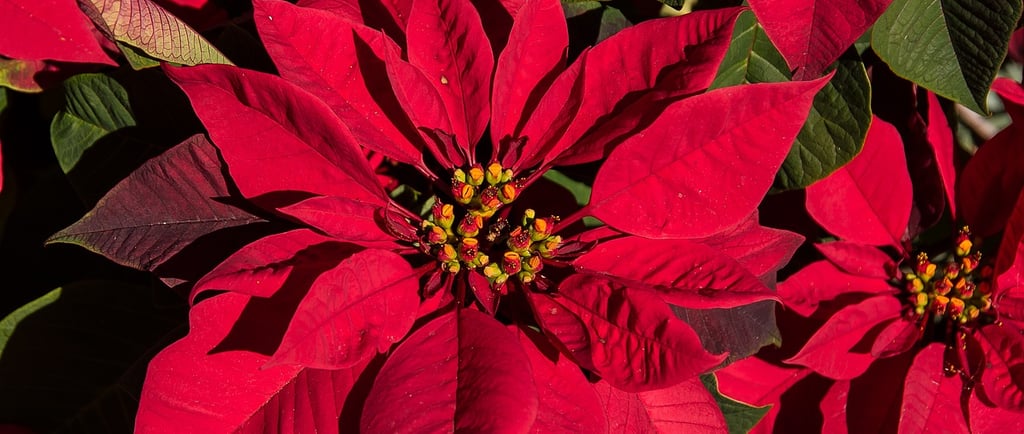🌟 The Star of Winter - The Poinsettia 🌺
✨ An I-Narrative 🌸 This story links two chapters in the Biology Album—The Flower and The Leaf 🌿—showcasing the interconnectedness of nature. I-Narratives ignite imagination, fostering empathy and curiosity. Children can walk alongside a leaf 🍁 as it tells the story of its journey through photosynthesis or marvel at the life of a planet like Pluto, uncovering its mysteries 🌌. They might even discover the secrets held in the silence of a flower like Lavender 🌺. These stories make abstract ideas tangible, weaving connections between science, history, biology, geography, geometry, language, music, and art 🎨. Through immersive narratives, children are inspired to ask more questions and seek answers themselves.🔍💡This approach nurtures a lifelong love of learning, inviting young minds to see themselves as part of the grand story of the universe. 🌌📚 With I-Narratives, everyday lessons transform into extraordinary tales that captivate and inspire. 🚀✨
BIOLOGY STORIES
12/21/20243 min read


Hello there! Do you know me? I’m the poinsettia, the bright and cheerful plant that loves to shine during the holiday season. 🌟 Some people call me the “Christmas Star” because of my vibrant, star-shaped leaves that brighten up homes and celebrations. My story begins long before Christmas traditions. Let me take you on a journey to my roots!
I come from the warm lands of Mexico in South America, where I was known as Cuetlaxochitl (👏Cue👏tla👏xoch👏itl👏) “kwet-la-SHO-she,”, meaning “flower that withers” in the ancient Aztec language. The Aztecs treasured me for my beauty and usefulness. My red leaves were used to make dyes for fabric, and my milky sap, called latex, was a natural remedy for fevers and skin problems. Can you imagine being both a decoration and a medicine? 🌺✨
Now let me tell you a special legend from Mexico. A long time ago, a little girl wanted to bring a gift to baby Jesus at her church’s Nativity scene. She didn’t have anything fancy to offer, so she gathered some green weeds from the side of the road. As she placed them by the manger, the weeds burst into bright red flowers—me! People began to call me the “Flores de Nochebuena,” or “Flowers of the Holy Night,” and ever since, I’ve been part of Christmas celebrations. 🎄🌺✨
Now in Mexico I'm still known Cuetlaxochitl ( kwet-la-SHO-she ) , but in your country I'm famous with another name. My journey didn’t stop in Mexico. Nearly 100 years ago a man named Joel Poinsett, the first U.S. ambassador to Mexico, saw me and fell in love with my beauty. He brought me to the United States, where I became a holiday favorite. People began calling me “Poinsettia” Poin👏set👏ti👏a👏 in his honor. Now, I’m grown and celebrated worldwide! 🌍✨
Let me share more about my colorful “flowers”, they aren’t actually flowers at all—they’re called bracts (👏bracts👏). The word bract comes from the Latin word bractea, meaning “thin plate” or “leaf-like structure.”This is a special leaf that’s not just there for decoration—it serves a purpose!In the case of the poinsettia, the bright bracts are like a colorful billboard, calling attention to the tiny, less noticeable flowers at the center. Nature’s clever way of saying, “Look here, pollinators!” 🐝🌿
My tiny, yellow, flowers located right in the center, are named cyathia (👏cy👏a👏thi👏a👏) this name comes from the Greek word kyathos, meaning “cup.” The cyathia may not look like much, but they’re important—they’re where my sweet nectar is stored, attracting tiny pollinators like bees and even hummingbirds in my natural habitat. 🐝🌸
And did you know my colors aren’t just red? My bracts can be white, pink, orange, or even marbled! Did you know that I hold a record? 🌟✨ I’m the best-selling potted plant in the United States during the holiday season! 🎄🪴 Millions of poinsettias are sold every December, making me a true holiday superstar. 🌍🎁 And here’s another surprise—I’m not poisonous like some people think. While it’s not a snack (I wouldn’t recommend nibbling on me!), I’m generally safe to have around curious kids and pets. 🐾🌸 I can grow taller than you, even taller than your parents. I can grow as tall as a basketball hoop?🏀 Yes, I’m not just a small potted plant! In the wild, I can reach heights of up to 10 feet tall (about 3 meters).
What’s truly amazing is how I change colors. I’m a photoperiodic plant (👏pho👏to👏pe👏ri👏o👏dic👏). You might remember the word “photo” from another story—it means “light,” and “period” means “cycle.” Which means I need long nights and short days to trigger my transformation. When the days grow shorter in the fall, my green bracts start to change, turning into bright, vibrant shades that everyone loves. It’s like nature’s way of saying, “The holidays are here!” 🎨✨
But I'm not the only photoperiodic plant out there! 🌸✨ Can you find out what other plants respond to the changing light and darkness? 🌚🌿You might be very suprise to discover the strawberry plant there. Maybe you’ll uncover some surprising connections between nature and the seasons. 🌍🕰️ 🍓🌾💡
With Montessori joy,
Vanina 😊

